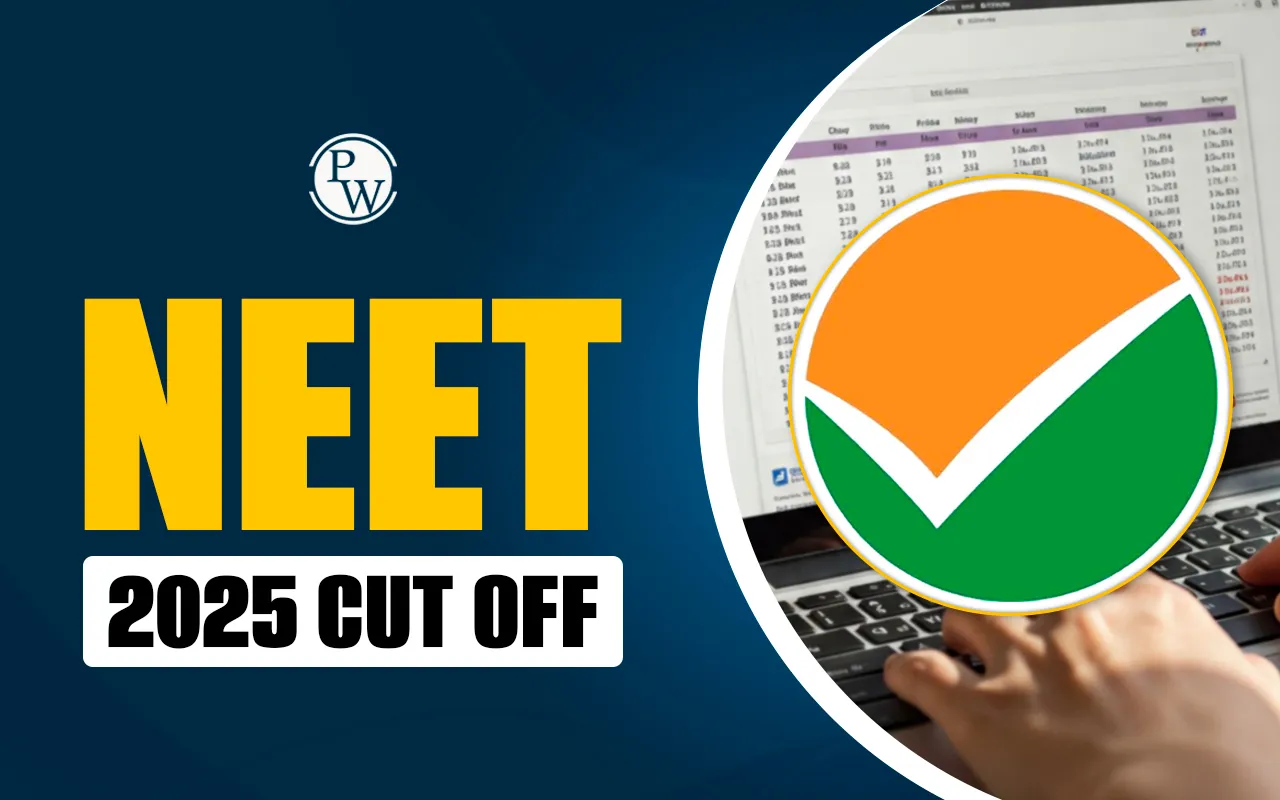
Difference Between Prokaryotic And Eukaryotic Translation: Translation is the cellular mechanism responsible for protein synthesis. It represents the second phase of genetic expression, during which ribosomes interpret the information encoded in mRNA to produce proteins based on the sequence of codons present, utilizing various amino acids. This universally occurring process takes place in both prokaryotic and eukaryotic cells.
| NEET Biology Syllabus | NEET Biology Diagrams |
| NEET Biology MCQ | NEET Biology Chapter wise Weightage |
| NEET Biology Notes | NEET Previous Year Question papers |
Despite differences between these cell types, the fundamental translation process remains the same. In both prokaryotes and eukaryotes, the information carried by mRNA, transcribed from DNA, is used by ribosomes as the essential machinery to synthesize proteins. The following article discusses the difference between prokaryotic and eukaryotic translation.
Difference Between Prokaryotic And Eukaryotic Translation Overview
Translation is a fundamental process in protein synthesis in both prokaryotic and eukaryotic cells that involves the interpretation of genetic information encoded in mRNAs. During translation, codons, which are nucleotide triplets on the mRNA, are transcribed into a chain of proteins. The primary difference between prokaryotic and eukaryotic translation is that bacterial translation and transcription occur simultaneously, whereas eukaryotes have separate processes. Translation occurs simultaneously in eukaryotic and prokaryotic cells. The 30S and 50S ribosomes are essential for prokaryotic translation, whereas the 40S and 60S ribosomes are used in eukaryotic translation.
Prokaryotic translation uses ribosomes to translate proteins, whereas eukaryotic translation uses tRNA to decode mRNA codons. The genetic information in prokaryotes is stored in DNA, representing proteins, nucleic acids, and pyrimidines. The genetic information is transcribed into mRNA, which is then translated by ribosomes.Enzymes specific to individual amino acids, important chemical compounds in proteins, must be present in this setup before protein synthesis can occur. The following article details the difference between prokaryotic and eukaryotic translation.
Difference Between Prokaryotic And Eukaryotic Translation
Prokaryotic translation uses ribosomes to synthesize proteins, whereas eukaryotic translation employs tRNA to interpret mRNA codons systematically. DNA, which stands for proteins, nucleic acid, and pyrimidine, is where genetic information is stored in prokaryotic cells. Ribosomes translate the genetic information after it is transcribed into mRNA. Protein synthesis in this system requires the presence of specific enzymes for individual amino acids, which are chemical compounds found in proteins, before any protein can be produced. The table presents a detailed difference between prokaryotic and eukaryotic translation.
| Difference Between Prokaryotic And Eukaryotic Translation | ||
| Aspect | Prokaryotic Translation | Eukaryotic Translation |
| Process Relationship | Simultaneous transcription and translation | Discontinuous processes |
| Ribosome Composition | 30S and 50S = 70S ribosomes | 40S and 60S = 80S ribosomes |
| mRNA Location | Cytoplasm; Polycistronic mRNA | Nucleus; Monocistronic mRNA; Released to cytoplasm after post-transcriptional modifications via nuclear pores |
| mRNA Lifespan | Unstable; Lives for a few seconds to two minutes | Stable; Lives for a few hours to days |
| Location of Translation | Cytoplasm by 70S ribosomes | Attached to the endoplasmic reticulum by 80S ribosomes |
| Cell Cycle Occurrence | No definite phase | It occurs in G1 and G2 phases in the cell cycle |
| UTR Sequences | Shine-Dalgarno sequence in 5′ UTR (~10 nucleotides upstream) | Kozak sequence in 5′ UTR (a few nucleotides upstream) |
| Translation Initiation | Cap-independent initiation | Both cap-dependent and cap-independent initiation |
| Initiation Factors | IF1, IF2, IF3 (Three factors) | eIF 1, 2, 3, 4A, 4B, 4C, 4D, 5, 6 (Nine factors) |
| First Amino Acid | N-formylmethionine | Methionine |
| Elongation Factors | EF-G, EF-Tu (Two factors) | eEF-1, eEF-2 (Two factors) |
| Translation Speed | Faster; Adds twenty amino acids per second | Slower; Adds a single amino acid per second |
| Fate of First Amino Acid | Formyl group removed; Retains methionine in the polypeptide chain | Entire methionine removed from the polypeptide chain |
| Release Factors | RF1 (for UAG and UAA), RF2 (for UAA and UGA) (Two factors) | eRF1 (Single factor) |
Prokaryotic Translation
In prokaryotes, translation and transcription occur simultaneously. Translation involves three main steps: initiation, elongation, and termination. Initiation involves assembling the 50S and 30S ribosomal subunits with the help of initiation factors (IF1, IF2, and IF3). N-formylmethionine is the first amino acid added, and GTP provides energy for peptide bond formation. The Shine-Dalgarno sequence aids in selecting the start codon.
The ribosome's active sites are A, P, and E, where elongation factors EF-G and EF-Tu play roles. The process continues until a stop codon (UAA, UGA, UAG) is reached, recognized by release factors (RF1, RF2, RF3). After protein release, the ribosome undergoes recycling facilitated by the Ribosome Recycling Factor and EF-G. Translation downregulation in the stationary phase involves ribosome dimerization facilitated by RMF, HPF, and YfiA, with RsfA and HflX as dissociation factors.
Eukaryotic Translation
Eukaryotic translation, the second step in gene expression, is distinct from transcription and occurs in a separate cellular compartment. Simultaneous transcription and translation are not possible in eukaryotes. Eukaryotic mRNAs, processed in the nucleus, feature a 5′ cap, poly A tail, and intron splicing before release to the cytoplasm.
Ribosomal pausing during translation delays the process, allowing time for proper folding of the polypeptide chain. Translation initiation in eukaryotes happens through cap-dependent or cap-independent mechanisms. Cap-dependent initiation involves initiation factors binding to the mRNA's 5′ end, while cap-independent initiation uses internal ribosome entry sites for direct binding to the start site.
Eukaryotic translation involves a 40S subunit associating with a 60S subunit to form an 80S ribosome. Eukaryotic translation employs two elongation factors, eEF-1 and eEF-2, following a similar process to prokaryotes. Termination of translation is comparable to the prokaryotic system, but the universal release factor eRF1 can recognize all three stop codons. The release factor eRF3 assists eRF1 in releasing the polypeptide chain.
Physics Wallah provides the online coaching for NEET exam in India, with high-quality training at a reasonable price. Explore NEET Online Courses by PW which have been skillfully designed to help students excel in their NEET exam preparation and succeed in the highly competitive NEET exam. Physics Wallah connects students with highly qualified teachers who specialize in explaining complicated ideas.
Difference Between Prokaryotic And Eukaryotic Translation FAQs
Where does the process of translation occur in prokaryotes and eukaryotes?
What is the translation process in both prokaryotes and eukaryotes?
What distinguishes prokaryotic from eukaryotic replication, transcription, and translation?
Is transcription or translation faster?
What are the steps involved in translation in prokaryotes?










